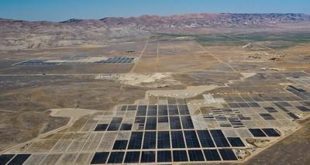U.S. Sets Preliminary Anti-dumping Duties on solar cells, Taiwanese Makers to See Improved Spot Market Prices Next Week
On May 17, the U.S. Department of Commerce announced its preliminary decision regarding anti-dumping charges against China’s solar cell and module makers. Anti-dumping duties imposed on China’s major solar cell manufacturers average 31.18%, with Suntech and Trina Solar receiving 31.22% and 31.14%, respectively. The remaining solar cell producers were hit with a high 249.96% tariff. According to EnergyTrend, a research division of TrendForce, the U.S. used Thailand as a benchmark to determine tariff levels. However, data from China indicates that Thailand’s current capacity does not even amount to 1% of China’s total capacity – such a gross difference in capacity will naturally result in very different cost conditions, which puts into question whether or not Thailand is a suitable gauge in the investigation.
The tariffs set only include solar cells manufactured in China, not solar cells from third-parties that are used in modules produced in China. However, documentation is necessary to receive exemption from anti-dumping duties upon import.
In light of this development, TrendForce believes that as total tax has reached 35%, far higher than makers’ expectation of 15-20%, Taiwanese manufacturers will benefit from transferred orders. Chinese suppliers will also increase the proportion of orders they place with Taiwanese manufacturers, with solar cell makers taking the bulk of orders. Additionally, Taiwan’s domestic module makers will benefit from a portion of shipments heading to the U.S. In terms of price, as industry players have been in wait-and-see mode for nearly two weeks now and most makers’ capacity utilization rate exceeded 80% in May, price will inevitably increase, marking the first time the Taiwanese PV market has seen a price increase this year.
In addition to the imminent price increase, the anti-dumping ruling has long-term implications as well. For instance, China’s potential counterstrategies include finding a small solar cell maker in the U.S. that has gone bankrupt but still has the necessary equipment for China to produce solar cells locally. Another possibility would be to construct a new solar cell plant outside of China, but the payback period is long for such an endeavor, and the current market is unsuitable for capacity expansion. Therefore, it is unlikely any strategic investments will be made before the final results of the investigation are announced at the end of November.
As of Q2, this year’s global demand volume is estimated at 26.5GW. However, currently it looks as if U.S. demand in the first half of the year will be stronger than expected – the U.S. demand forecast is increased from 3.5GW to around 5GW for 2012, which will stimulate global demand as the U.S. accounts for 17% of the global market. Furthermore, Taiwan’s total solar cell capacity is currently around 8GW, and Taiwanese manufacturers make the majority of China’s outsourced production. In the short term, the supply and demand status as well as the current market expectation will cause price to rise, and the PV market price slashing caused by oversupply will continue.
2012 Projected Global PV Installation

 Alternative Energy HQ solar power for homes, wind energy, and bio fuel issues
Alternative Energy HQ solar power for homes, wind energy, and bio fuel issues






